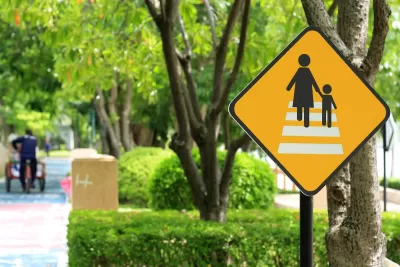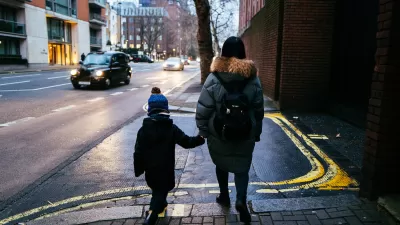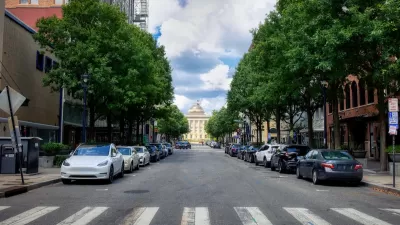Eliminating road deaths requires an overhaul of U.S. infrastructure and regulations to prioritize the safety of people in cars, on foot, and on bikes.

In an opinion piece for The New York Times, Jamelle Bouie outlines the challenges to stemming the mounting number of traffic deaths on U.S. roads, including the size of vehicles and the design of roads and infrastructure.
“It is difficult to overstate just how much the design of modern trucks and S.U.V.s threatens pedestrian safety,” Bouie writes. “In a 2020 study of pedestrian crashes in Michigan, the Insurance Institute for Highway Safety found that at residential and city speeds of 20 to 39 miles per hour, 30 percent of crashes with S.U.V.s resulted in pedestrian fatalities, compared with 23 percent for cars. At 40 miles per hour or higher, all crashes with the S.U.V. killed the pedestrians, while just over half the crashes with cars resulted in pedestrian fatalities.”
Meanwhile, the lack of safe pedestrian infrastructure on many streets puts pedestrians and cyclists at even higher risk. “Pedestrian infrastructure is often worst in places that are most disadvantaged. Compared with more affluent neighborhoods, these communities have fewer parks, sidewalks, marked crosswalks and other measures to calm traffic. They are also more likely to have wider roads and sparse streetscapes, which encourage speeding.”
For Bouie, “the path to drastically reducing pedestrian deaths is a steep one. It would require our cities to completely rethink their vehicle and pedestrian infrastructure, with an emphasis on reducing traffic speeds and redesigning streets to force drivers to slow down.” It also calls for improving public transit and multimodal infrastructure that offers people realistic, efficient, and affordable ways to get around without cars. “America’s City Councils, city planners and traffic engineers would, in short, have to prioritize safety over speed and the efficient movement of vehicles.”
FULL STORY: Opinion | The Path to Reducing Pedestrian Deaths Is Steep but Straight

Maui's Vacation Rental Debate Turns Ugly
Verbal attacks, misinformation campaigns and fistfights plague a high-stakes debate to convert thousands of vacation rentals into long-term housing.

Planetizen Federal Action Tracker
A weekly monitor of how Trump’s orders and actions are impacting planners and planning in America.

San Francisco Suspends Traffic Calming Amidst Record Deaths
Citing “a challenging fiscal landscape,” the city will cease the program on the heels of 42 traffic deaths, including 24 pedestrians.

Defunct Pittsburgh Power Plant to Become Residential Tower
A decommissioned steam heat plant will be redeveloped into almost 100 affordable housing units.

Trump Prompts Restructuring of Transportation Research Board in “Unprecedented Overreach”
The TRB has eliminated more than half of its committees including those focused on climate, equity, and cities.

Amtrak Rolls Out New Orleans to Alabama “Mardi Gras” Train
The new service will operate morning and evening departures between Mobile and New Orleans.
Urban Design for Planners 1: Software Tools
This six-course series explores essential urban design concepts using open source software and equips planners with the tools they need to participate fully in the urban design process.
Planning for Universal Design
Learn the tools for implementing Universal Design in planning regulations.
Heyer Gruel & Associates PA
JM Goldson LLC
Custer County Colorado
City of Camden Redevelopment Agency
City of Astoria
Transportation Research & Education Center (TREC) at Portland State University
Jefferson Parish Government
Camden Redevelopment Agency
City of Claremont





























